If you’re wondering how to stay connected during your Summer travels to keep your family entertained, be available for work, or want to ensure you’re able to contact emergency services, Starlink Roam and T-Mobile AWAY are reliable options. Starlink Roam is for connecting from nearly anywhere, and its portable hardware makes it ideal for taking it way off the grid. T-Mobile AWAY is an affordable service that's suited for frequent travelers like those who live a nomadic lifestyle, but are still near civilization.
Starlink Roam vs T-Mobile AWAY: What’s the Best Mobile Internet Solution?
I’ve done extensive testing on both solutions. I found plenty of similarities, but also some huge differences, which made me determine who the ideal users would be and for what use cases. Their price points are similar, but they’re also not inexpensive, so you’ll need to know which solution will be best suited for your needs. I’ve also compared Starlink and T-Mobile’s home internet options.
Starlink Roam & T-Mobile AWAY Plans & Pricing
Starlink Roam is a satellite internet solution that has two main plans, one with a 50GB data cap and an unlimited plan. They both have the same features and speed capabilities. If you run out of Starlink data, you can opt to pay for more. Another aspect of Starlink that makes it different from other internet solutions is the need to purchase the hardware required to use the service. It’s currently $349 for a Standard Starlink kit and $499 for the even more portable Starlink Mini.
Multiple Priority plans are mobile and come with different data allotments. These plans are primarily marketed to businesses, but can still be purchased by anyone.
T-Mobile 5G internet works off the same wireless network that its smartphones connect to. It originally debuted as a home internet solution, but last year, it released its AWAY plan, which allows the service to be used anywhere its wireless network reaches. It connects through a gateway device, which also acts as a Wi-Fi router. The signal strength is based on your proximity to T-Mobile’s cellular towers.
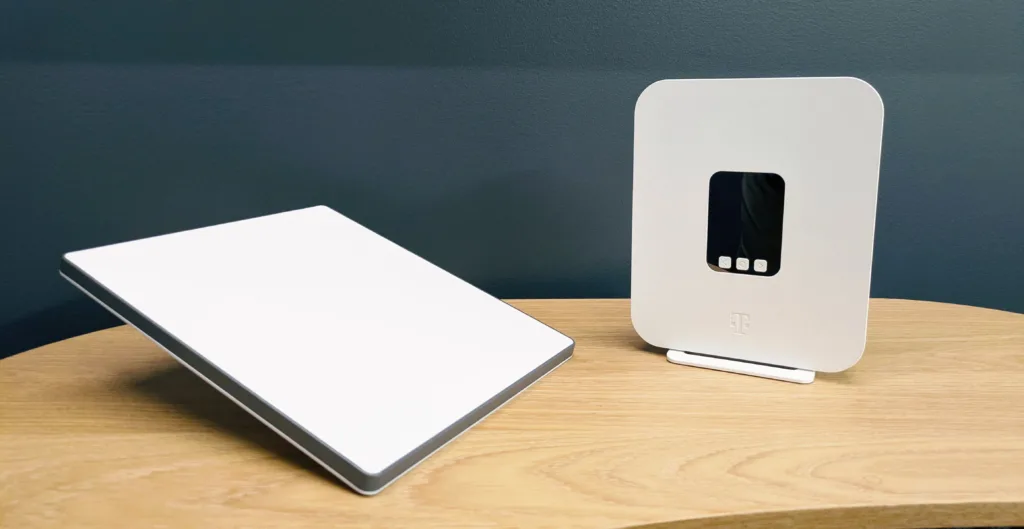
The Starlink Mini (left), besides the T-Mobile 5G gateway device (right). Both devices are lightweight and just need to be plugged into a power source. | Photo by Andreas Rivera for SatelliteInternet.com
Starlink Mini
- Size: 11.75 in x 10.2 in
- Weight: 2.56 lb
- Current Price: $499
- Features: Wi-Fi router built into the dish, size and weight of a laptop
T-Mobile AWAY
- Size: 8.9 in x 7 in
- Weight: 1.94 lb
- Current Price: Included with subscription
- Features: Wi-Fi router built into the dish, size and weight of a laptop
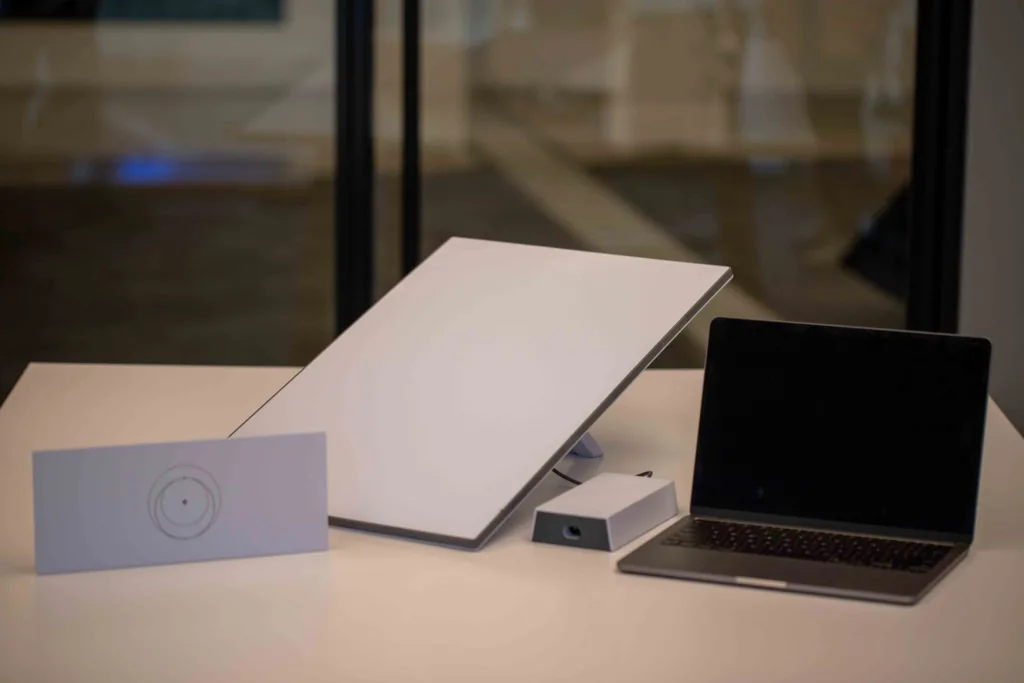
Starlink Standard
- Size: 23.4 in x 15.07 in
- Weight: 7 lb
- Current Price: $349
- Features: Kickstand for on-the-go setup, lightweight, improved Wi-Fi
Starlink Roam or T-Mobile AWAY are neck and neck when it comes to speed, but not always
Starlink Roam Speed
I have tested it and found that Starlink Roam holds up to most home internet speeds, allowing me to watch, play, learn, and work nearly anywhere I want. Despite its being a lower priority on the Starlink network than its residential or priority service, it’s still amazingly fast and has low latency. According to its broadband nutrition label, it should reach a range of 30 to 100Mbps of download speed. However, as I used it in several different locations and times of day, I found that it was capable of reaching even faster speeds, close to 220Mbps.
Starlink is also known for its low-latency internet connection, allowing for faster browsing and streaming. I was able to seamlessly download and stream while connected to Starlink Roam, including while I was driving. Plus, I was able to play online video games without any problems.
T-Mobile AWAY Speed
I tested the T-Mobile AWAY service and gateway device from several different locations, including my home, office, and on the road. T-Mobile specifies that AWAY is capable of speeds of 91 to 361Mbps when connected to 5G. My speed tests would fall between 150 and 300Mbps. The highest speed I recorded was 372Mbps. However, the higher speeds recorded required clear weather. During a rainstorm, my speed dipped to a snail’s pace of 22Mbps; still usable, but most activities online were noticeably slower.
T-Mobile AWAY suffers from a higher-than-average latency, almost double that of Starlink. It’s nothing compared to other satellite internet providers that have latency in the hundreds, but it’s still noticeably sluggish compared to Starlink. Streaming content was easy enough, but it’s not a service for playing online games, which typically requires low latency.
Starlink Roam is reliable anywhere, while T-Mobile AWAY's availability is imperfect
Starlink Roam Reliability
I found that it can keep a reliable connection, even while moving. I took it with me on a brief road trip once, and my passengers and I were able to browse the web, stream music, and listen to podcasts seamlessly. It never cut out on us after hours of use. I’ve also been impressed by its ability to keep a strong signal even during times of heavy overcast or stormy weather. These elements severely limit the signal of other satellite internet providers and 5G wireless providers.
T-Mobile AWAY Reliability
As I mentioned before, T-Mobile AWAY’s download speeds are inconsistent compared to other providers. Speeds are affected by weather, time of day, and location. However, I did find that once the gateway device was able to connect, it would maintain a consistent link to the network. I was even able to take it up a high canyon, far from the city, and make a Zoom call to a coworker with surprising quality. It wasn’t perfect, but I could tell that even if it wasn’t getting its usual high speed, it was still strong enough to connect to the T-Mobile network.
Availability
Starlink Availability
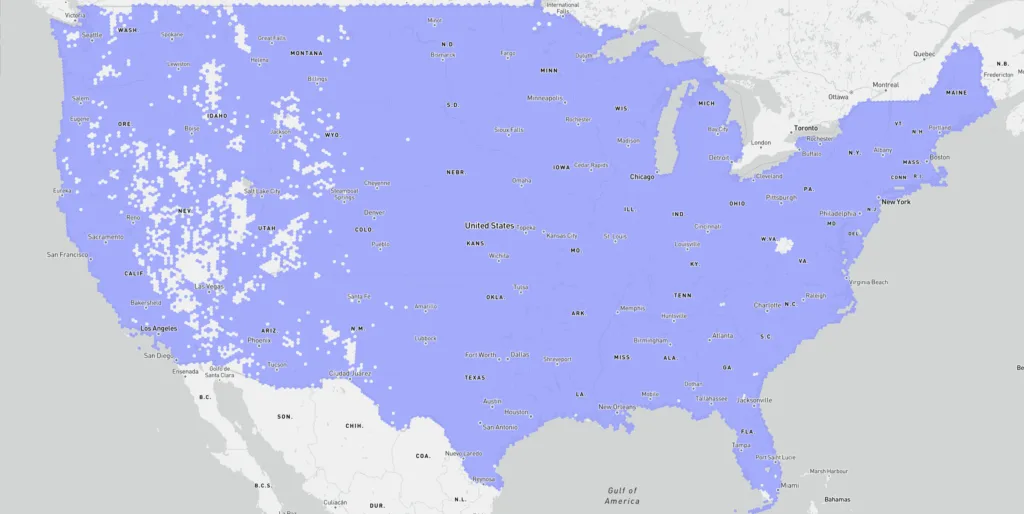
Data from the Federal Communications Commission National Broadband Map
T-Mobile Availability
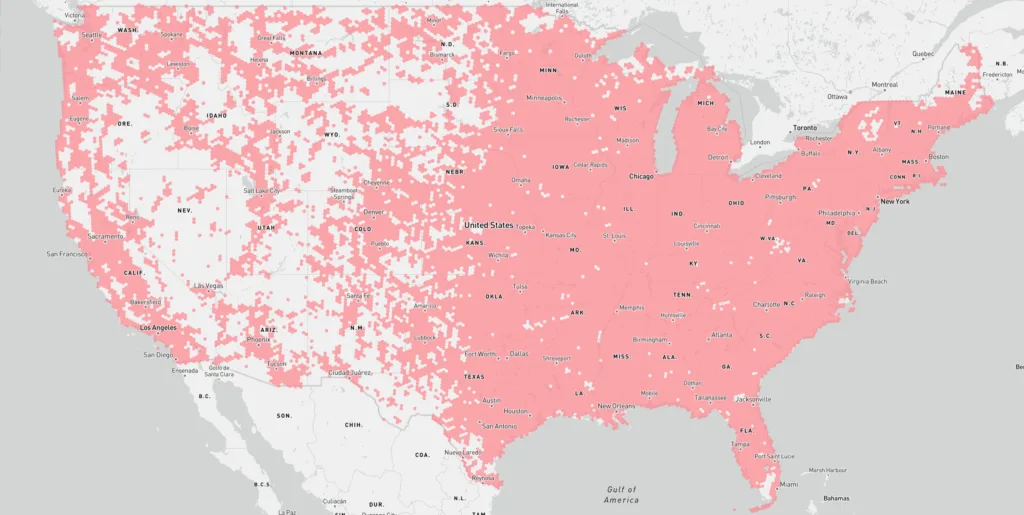
Starlink Roam and T-Mobile AWAY are both road-ready, but it depends on where you’re going
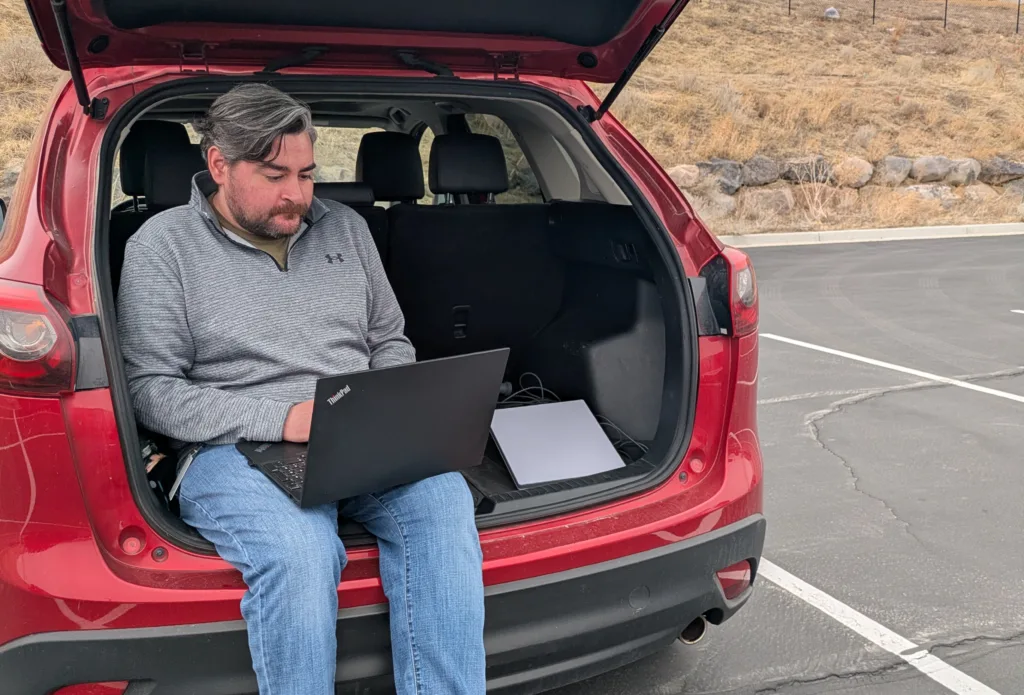
To use Starlink Mini on the road, I just plug it into my DC power inverter, which is plugged into my car's 12-volt outlet. | Photo by Candice Garcia for SatelliteInternet.com
Starlink Roam Portability
I was able to connect to the Starlink satellite network everywhere I went during my testing. However, before I started, I realized it could be challenging to power the dish when you’re taking it on the road. Unless you have a vehicle with an electrical outlet, it will require a little more investment. I tested the Starlink Mini with a portable power bank for laptops and a DC power inverter for the car.
As far as portability, the Standard dish is lightweight, but still takes up space unless it’s mounted to a vehicle or RV. Plus, it still requires a Starlink router connected to a reliable power source. I found the Starlink Mini much easier to take on the go. More than half the size and weight of the Standard dish, it easily fits in my backpack along with my power bank. It’s ideal for backcountry hiking or remote camping to ensure I stay connected, especially in case of emergencies. Plus, once it’s connected to the Starlink network, I could move around with it, even when driving down the freeway.

The T-Mobile AWAY gateway is easy to travel with and can be easily powered with a portable power bank. | Photo by Andrea Gutierrez Prieto
T-Mobile AWAY Portability
Similar to Starlink, T-Mobile AWAY needs a reliable power source. I was able to power it with the same methods I used with the Starlink Mini. The gateway device is small and lightweight, but clearly not originally made to be portable since it’s the same device used for T-Mobile’s 5G Home Internet. It comes with a mount for securing it in your car or RV. It’s small and lightweight enough to take with you in a backpack, but given its limitations, going too far off the grid could make it useless.
These mobile solutions aren’t cheap, so is Starlink Roam or T-Mobile AWAY going to be worth the money?
Starlink Roam Value
Starlink Roam is by far the more expensive solution. The one-time equipment fee and high monthly service fee mean you’ll spend at least $515, not including taxes, for the Standard dish in your first month. It’s a steep price for high-speed internet on the go, even if it is fast and reliable. I would say it’s the superior solution if you’re willing to pay the price and you need it for use cases that really put you in remote locations.
Its 50GB plan is much more affordable at $50 per month, and more ideal for short trips, plus it can be cancelled at any time with the click of a button. I would just be sure that 50GB will be enough for you and your family; otherwise, you’ll end up paying more for extra data.
T-Mobile AWAY Value
T-Mobile AWAY isn’t exactly cheap, but it’s more affordable in the short term than Starlink since you’re not buying the equipment, just paying the monthly service charge of $110 or $160. Plus, the more affordable 200GB plan gives you much more data per month than Starlink’s cheaper Roam plan. I believe it’s more ideal for usage over a few months, like extended family vacations—just as long as you’re not going anywhere too remote. T-Mobile’s 5G network blankets a lot of the country, but indeed not everywhere.
A few aspects to be aware of are that, since you’re leasing your equipment, you could be charged fees for broken or lost equipment. It’s also a bit more complicated to cancel service since you have to call customer service, and then you’ll be responsible for returning the equipment.
Who I recommend Starlink Roam and T-Mobile AWAY is for
When picking reliable mobile internet, both Starlink Roam and T-Mobile AWAY are dependable solutions that provide better speeds and coverage than just using your smartphone. However, after using both, I can conclude that they’re suited for different types of customers and for other use cases.
For a much larger investment, Starlink provides more consistent speeds that can be accessed nearly anywhere. It’s made for applications that far exceed a weekend family road trip. These include maritime, rural emergency response, and, in the case of the Starlink Mini, backcountry hiking.
T-Mobile AWAY is a more affordable, temporary mobile internet solution. Its 5G network limits it, so you can’t go too off the beaten path. While it still has impressive reach, its limitations are apparent, so I wouldn’t entirely depend on it as your only link to stay connected. I see it as an ideal solution for those traveling the country, whether for family trips or for those who live a nomadic lifestyle.